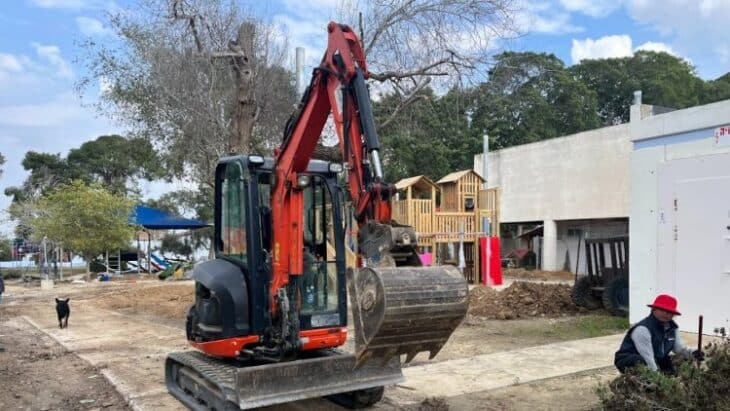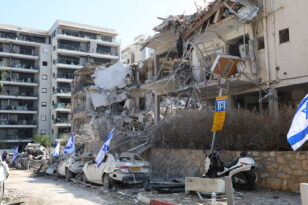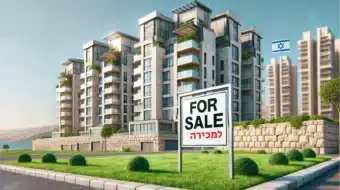According to data from the Tekuma Administration on rehabilitation and the return of residents, approximately 92% of those without security or reconstruction barriers have already returned. Most reconstruction work will be completed by 2025, with four communities set for completion in 2026. The Tekuma Administration has also provided temporary housing units, 99% of which were delivered in less than a year. The administration’s five-year budget stands at approximately NIS 19 billion, with around NIS 7 billion committed in 2024.
After 500 days of war, the vast majority of residents from the 45 communities in the Tekuma region and the city of Sderot have returned home, according to data published this morning (Monday). Out of approximately 64,000 residents, around 53,000—accounting for 83% of the region’s population—have returned. This means that 92% of those without security or reconstruction obstacles have come back.
Thirteen communities cannot return due to government security decisions or ongoing reconstruction work. Nine of these face both security and reconstruction barriers: Kfar Aza (currently housed in Ruhama), Nahal Oz (in Mishmar HaEmek), Be’eri (in Hatzerim), Holit (in Revivim), as well as Kisufim (in Omer), Kerem Shalom (in Ashalim), Nir Oz (in Kiryat Gat), Nirim (in Be’er Sheva), and Ein Hashlosha (in Netivot). Additional communities restricted due to security concerns alone include Nir Yitzhak (Ayalot), Sufa (Ramat Gan and Ofakim), Netiv HaAsara (Tel Aviv, Gan Yavne, and Ashkelon). Re’im (Tel Aviv-Yafo) is restricted due to reconstruction needs.
According to the data, most communities are in an advanced stage of rehabilitation, with essential reconstruction expected to be completed in 2025. In four communities—Holit, Kfar Aza, Be’eri, and Nir Oz—construction is scheduled for completion in 2026. In the communities that suffered severe physical damage, extensive reconstruction efforts are being carried out at a rapid pace.
In Kerem Shalom, Nahal Oz, Nirim, Re’im, and Ein Hashlosha, the Tekuma Administration reports that work is underway with defined timelines for reconstruction and renewal. Some communities are even ahead of schedule. In Kisufim, work is expected to begin later this month. In Nir Yitzhak, Sufa, and Netiv HaAsara, damages have been addressed or are currently being handled under the property tax compensation framework, according to the needs of the communities and residents.
In Be’eri, extensive reconstruction is ongoing, with around 70 out of 150 homes designated for demolition already dismantled. At the same time, about 250 out of 400 damaged homes have been repaired to varying extents. Additionally, new neighborhoods are being built to address housing needs: in the Shikmim neighborhood, 52 housing units are under construction, with 10 already at the exterior finishing stage, while in the Eshkol neighborhood, 12 units are in the infrastructure phase. In Kfar Aza, contracts with contractors have been signed, and work is set to begin in the coming weeks, including both new construction and renovations.
In Kerem Shalom, the administration reports that 36 residential homes and three public buildings have been fully restored. In the coming month, the reconstruction of an additional 24 homes is expected to be completed, allowing for the removal of rehabilitation barriers and the return of residents. Reconstruction in Re’im and Nirim is progressing faster than planned. In Re’im, renovations on 90 lightly and moderately damaged homes are expected to be completed within two weeks, with rehabilitation restrictions removed by the end of March 2025. In Nirim, the first renovated homes have already been delivered, with all homes expected to be handed over by the end of the month, enabling the removal of rehabilitation restrictions by the end of April 2025.
In Ein Hashlosha, renovations are underway on 75 out of approximately 150 homes. For buildings that suffered severe damage and are slated for demolition, a designated administrative track is in place to provide tailored housing solutions for affected families. In Nahal Oz, 60 homes are currently undergoing renovations, with another 50 set to enter the reconstruction process by the end of the month. All work is expected to be completed by July 2025, allowing for the return of residents to the community.
In Nir Oz, the rehabilitation plan has not yet been approved and is under discussion with the kibbutz. In Sderot, upgrades are being carried out on 333 residential entrances and 10 public buildings across five neighborhoods as part of a NIS 55 million development plan.
Currently, the Tekuma Administration has provided temporary housing solutions for communities unable to return due to security or reconstruction barriers. 99% of these housing units were delivered to residents in need within less than a year. For four kibbutzim that suffered extensive physical damage, the Tekuma Administration, in collaboration with the Settlement Division and the Ministry of Construction and Housing, has established temporary rural housing sites.
For the Kfar Aza community, 184 temporary housing units were set up in Kibbutz Ruhama, along with six educational buildings and renovations of existing structures for public use. The Be’eri community received 287 temporary housing units in Kibbutz Hatzerim, along with six kindergartens, a clinic, offices, a dining hall, and a playground. Additional public buildings were renovated for the Be’eri community by the kibbutz. The Holit community received 61 temporary housing units in Kibbutz Revivim, as well as two public buildings and three community/educational facilities.
For the Kisufim community, 78 temporary units were set up in Omer, along with three kindergartens, offices, and a playground. For other communities in temporary housing solutions, the administration has rented urban apartments. The temporary housing units range from 60 to 120 square meters, depending on family needs.
The Tekuma Administration’s five-year budget stands at approximately NIS 19 billion, with about NIS 7 billion allocated in 2024. The total physical rehabilitation budget for all communities is NIS 1.5 billion, with around NIS 1.1 billion dedicated to the 10 hardest-hit communities—four times the initial property tax compensation estimate for these areas.
Among the most severely affected communities, NIS 470 million was allocated for the rehabilitation of Be’eri, NIS 200 million for Kfar Aza, and NIS 230 million for Nir Oz. An additional NIS 1.4 billion was allocated over five years for infrastructure upgrades, security measures, and public buildings in communities, regional councils, and the city of Sderot. Of these funds, projects worth approximately NIS 200 million were approved and funded in 2024.

Nadlan Center is Israel’s leading real estate news and knowledge platform in Hebrew, created for industry professionals. Founded by experts in the field, it delivers in-depth, up-to-date coverage on urban renewal, planning and construction, taxation, and housing policy — tailored to the needs of developers, investors, planners, and financiers. In addition to its widely read news content, Nadlan Center hosts major industry events, professional conferences, and training programs that support the growth and development of the Israeli real estate sector.
Learn more: https://www.nadlancenter.co.il







